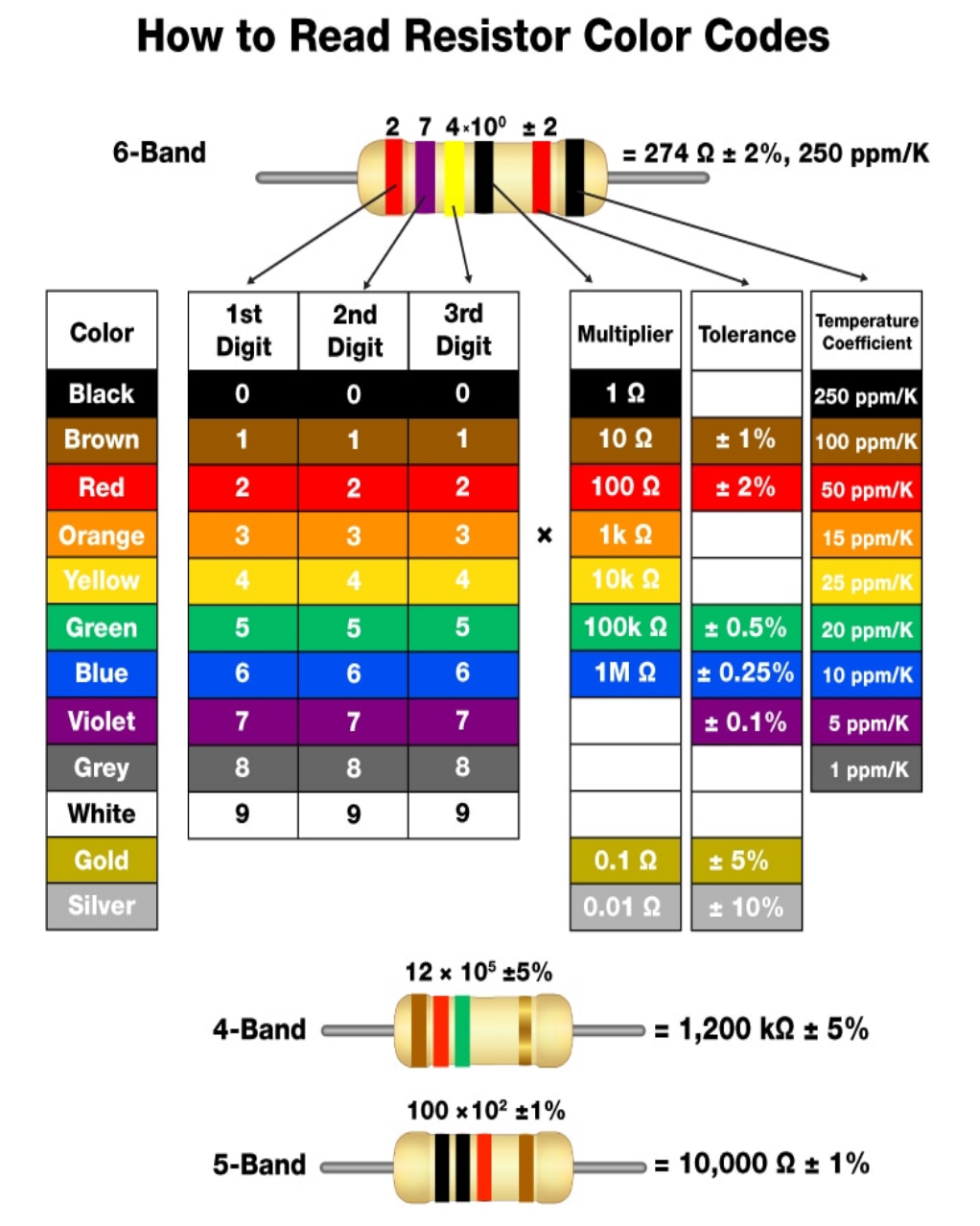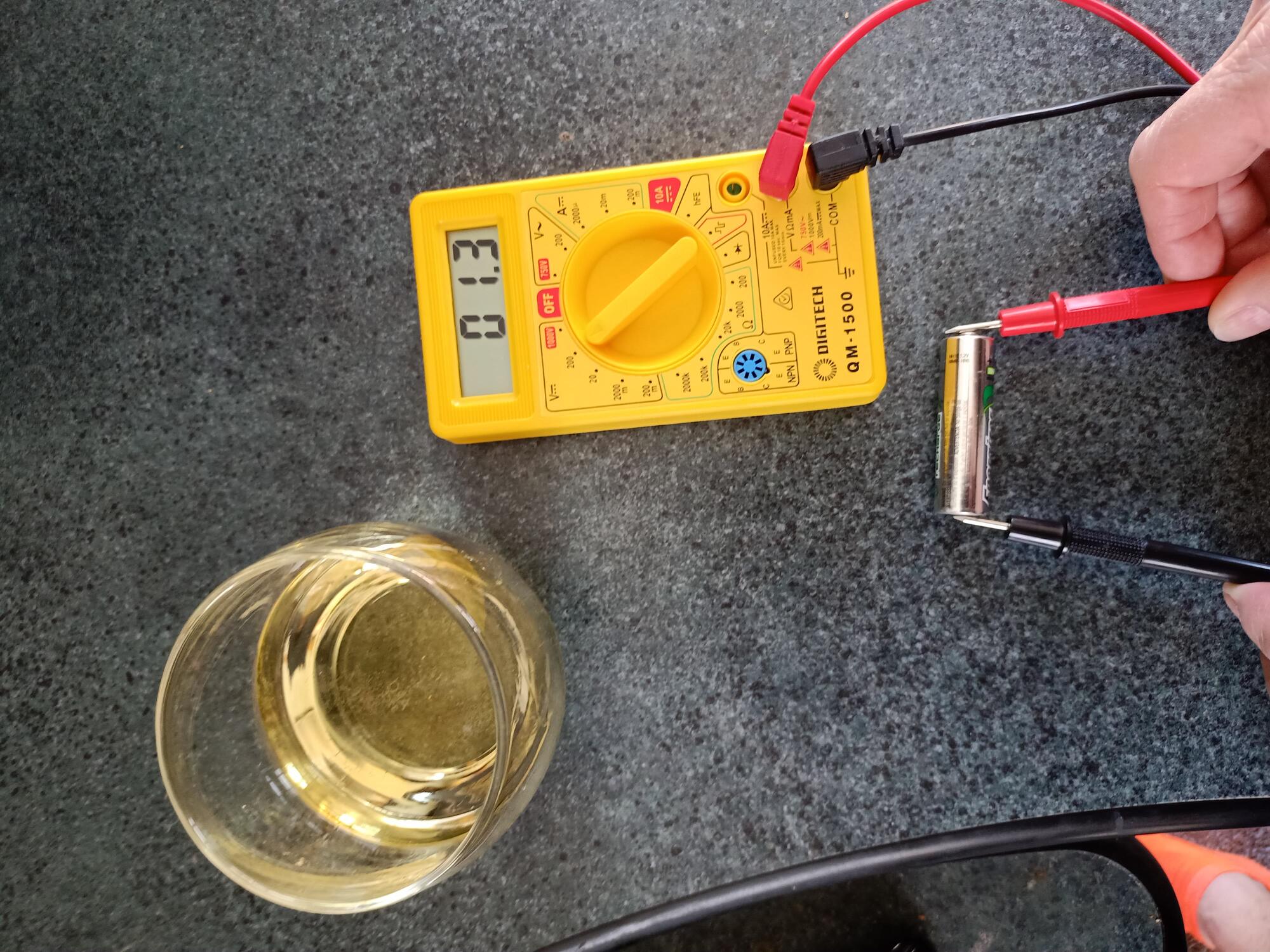Iain's Electronics Page: Difference between revisions
| Line 47: | Line 47: | ||
We can see the + and - of the batter is flowing vertically and the components are connected horizontally. | We can see the + and - of the batter is flowing vertically and the components are connected horizontally. | ||
[[File:Breadboard2.png|300px]] | [[File:Breadboard2.png|300px]] | ||
= | =Capacitors= | ||
==Purpose== | |||
The capacitor store current which can be released when the circuit is under load and the current drops. | |||
==Types== | |||
There are different types of capacitor. Electrolytic capacitors and Ceramic capacitors are two common types. The Electrolytic capacitors have a positive and negative (or polarized) and will explode when failing this is because the component contains a liquid inside which can boil. | |||
=Resisters= | |||
==Purpose== | |||
A resistor is a passive two-terminal electrical component that implements electrical resistance as a circuit element. In electronic circuits, resistors are used to reduce current flow, adjust signal levels, to divide voltages, bias active elements, and terminate transmission lines, among other uses. | |||
==Reading Resisters== | |||
Here is a chart for reading resisters.<br> | Here is a chart for reading resisters.<br> | ||
[[File:ResisterChart.png|300px]]<br> | [[File:ResisterChart.png|300px]]<br> | ||
=Capacitors= | |||
Revision as of 21:28, 28 October 2021
Using a Multimeter
Measuring Voltage
To measure voltage on a battery.This is an example of a 1.4 AA battery.
- black goes to the negative and red to the positive or knobbley end.
- make sure black lead is in COM on the multimeter
- make sure red lead is in V on the multimeter
- connecting in correctly will result in a negative number
- the numbers in the V section are the range in mA.
- using the 200mA will result in 1364 or 1.364 Volts
Measuring Voltage of a Circuit
Below we have a circuit with a battery, resister and LED.
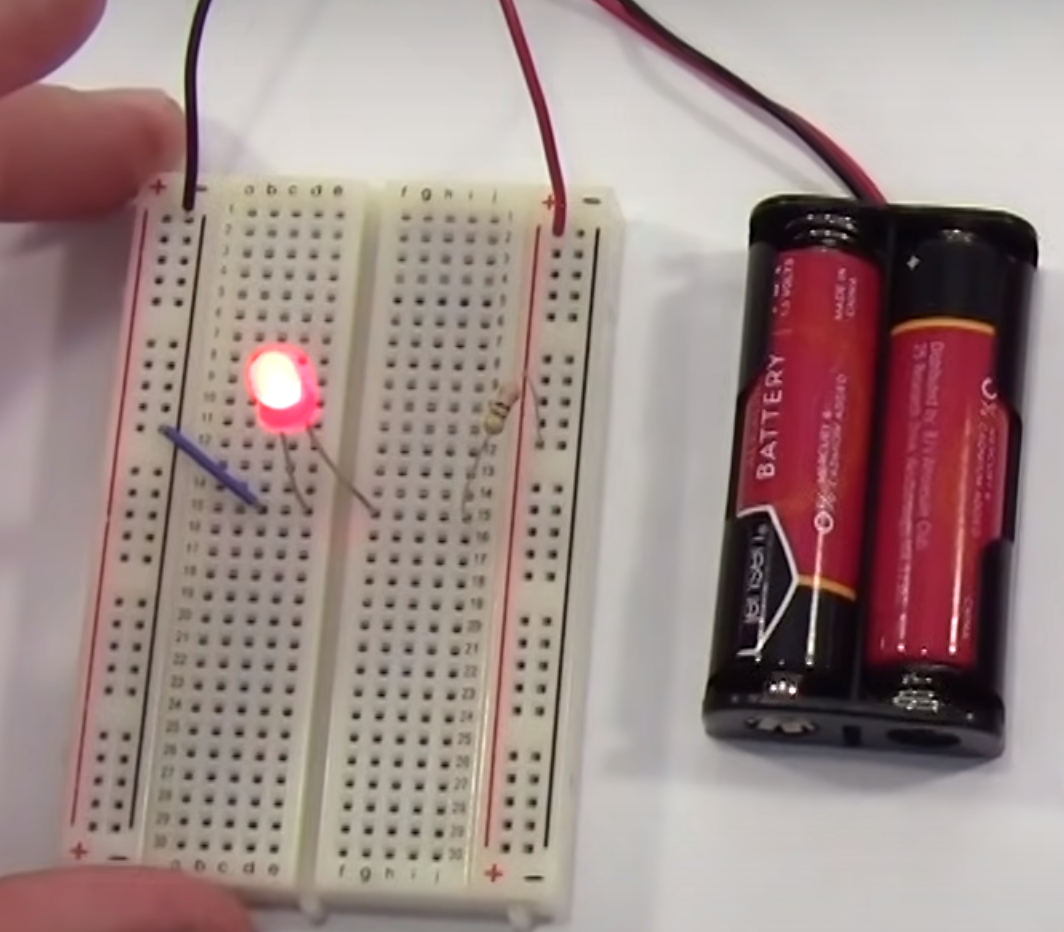
Here would be the circuit diagram.
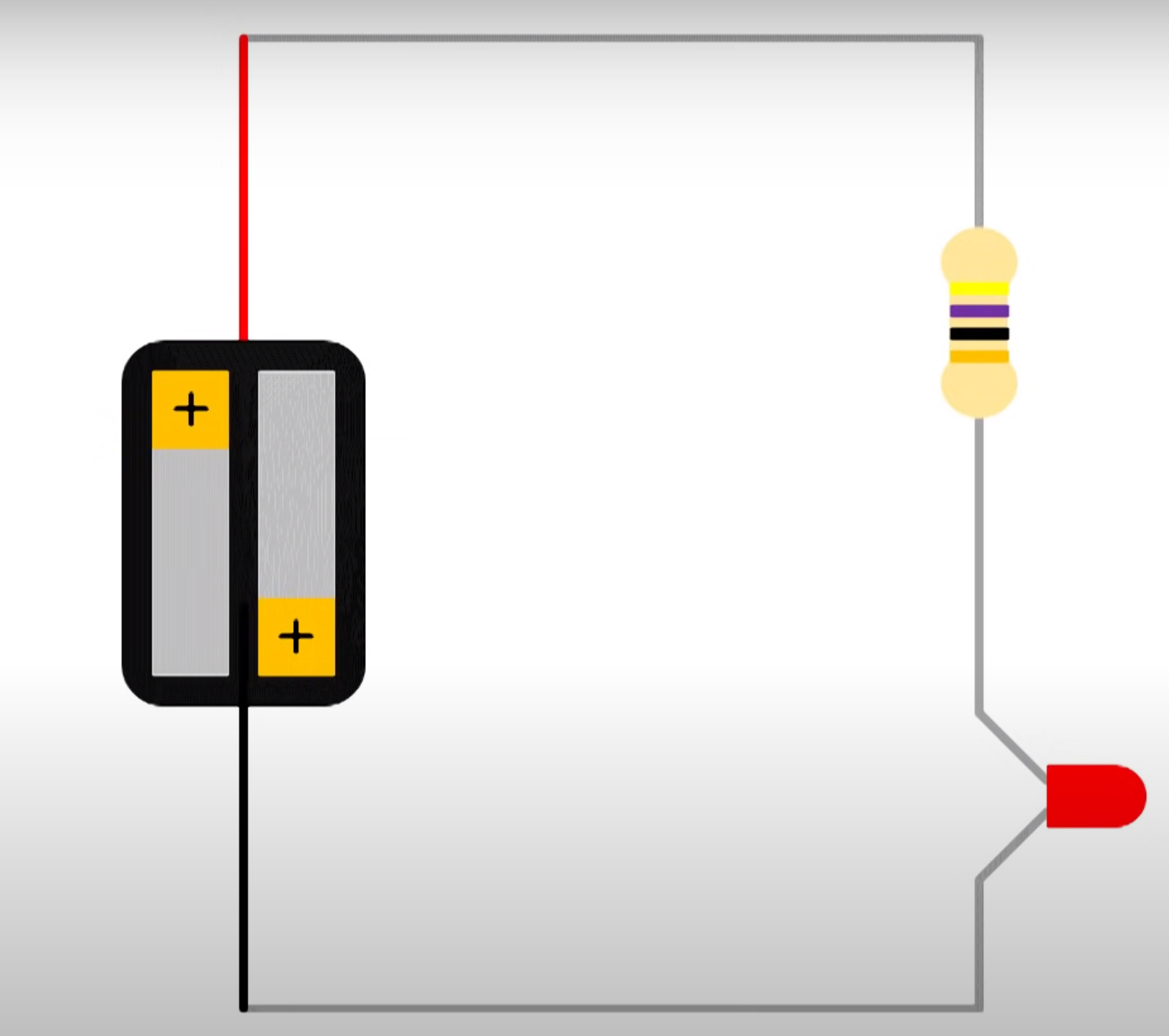
In circuit is said to be in series as one component follows another. We can measure the voltage across any one of the components individually. To measure you connect the multiimeter in parallel which means you put the probes either side of the component. This is said to be measuring in parallel. As usual the black goes to black (negative).
Example of measuring the voltage of the LED.
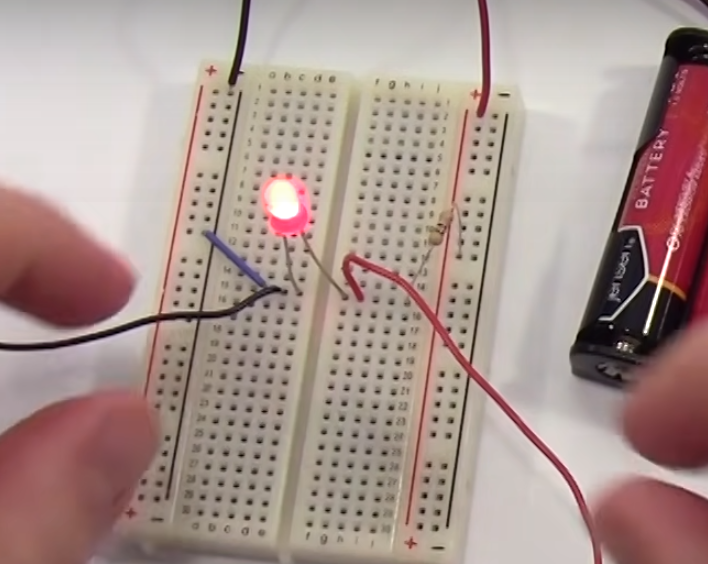
In our case they measured
- 2.83 battery
- 2.3 led
- 0.64 Resister
Which means the voltage of the led and resister = voltage of the battery.
Measuring Current of a Circuit
This will be the same where ever we measure for the circuit.
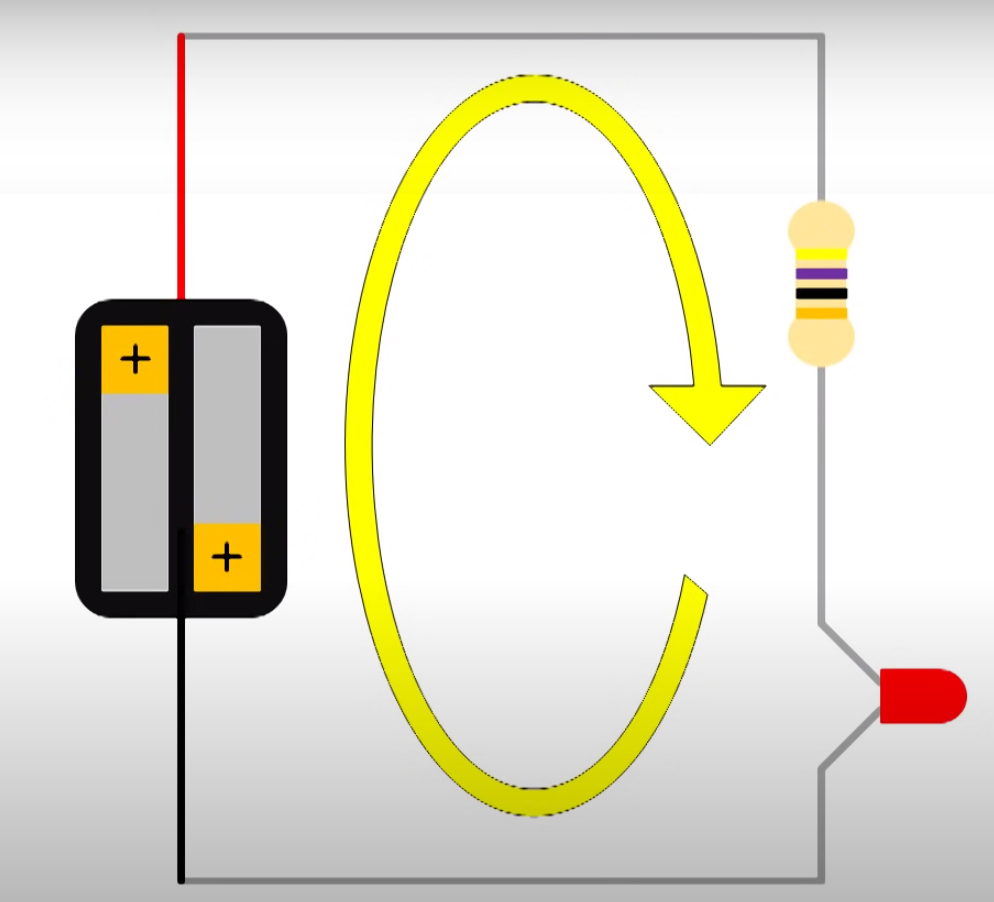
Key Points to measure Current
- Always set the meter back to volts when done because you might blow the fuse
- Always' use the top socket on the multimeter to start because you might blow the fuse
- To measure the current we need to add the probes in series
See the probes are added to the circuit.
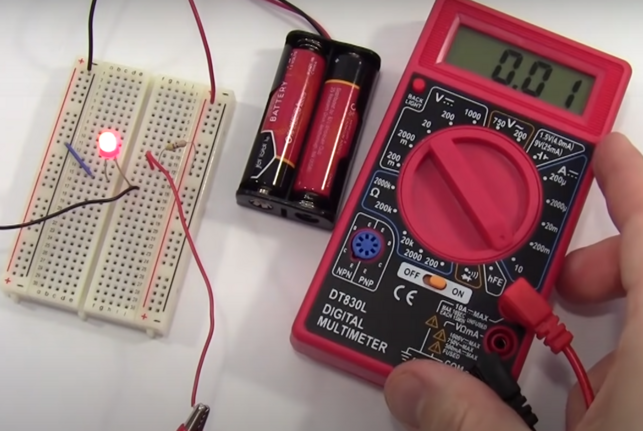
Measuring Resistance
Set to Ω Ohms to measure resistance. Always measure unplugged and not in a live environment. Same as before. Set multimeter to Ohms and use the range appropriately.
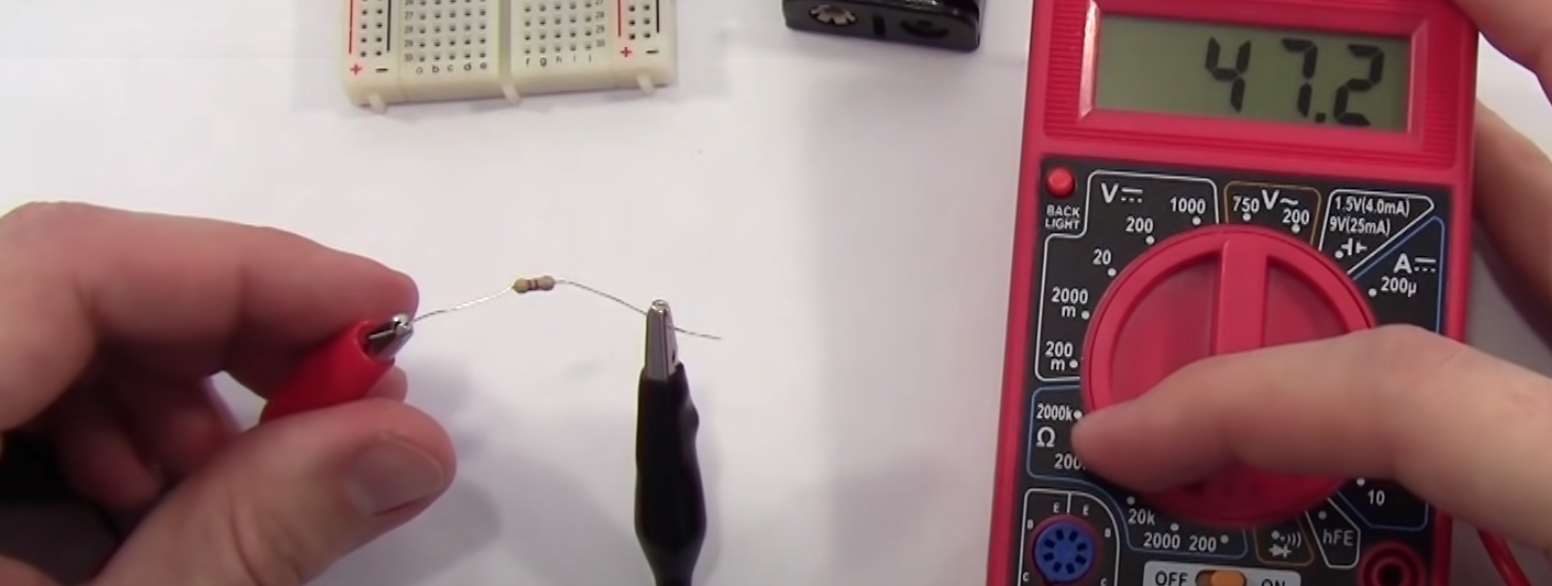
Checking a Conductive Path
The final setting which looks like a diode beeps if there is a conductive path. We can now test the circuit to ensure that components are connected.
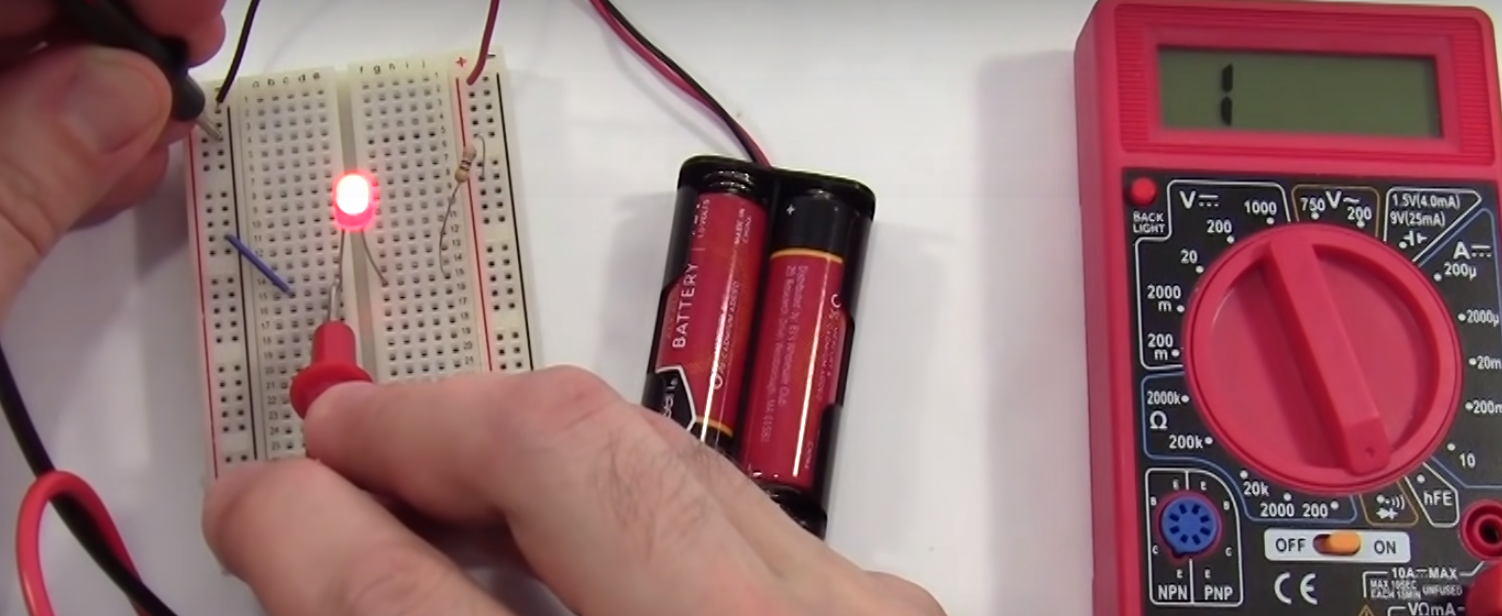
Breadboards
Origin
This comes from when they did use bread boards with screws in to make a circuit
Usage
Basically they operate horizontally in the middle and vertically on the outside. Typically the outside rails are for the power supply.
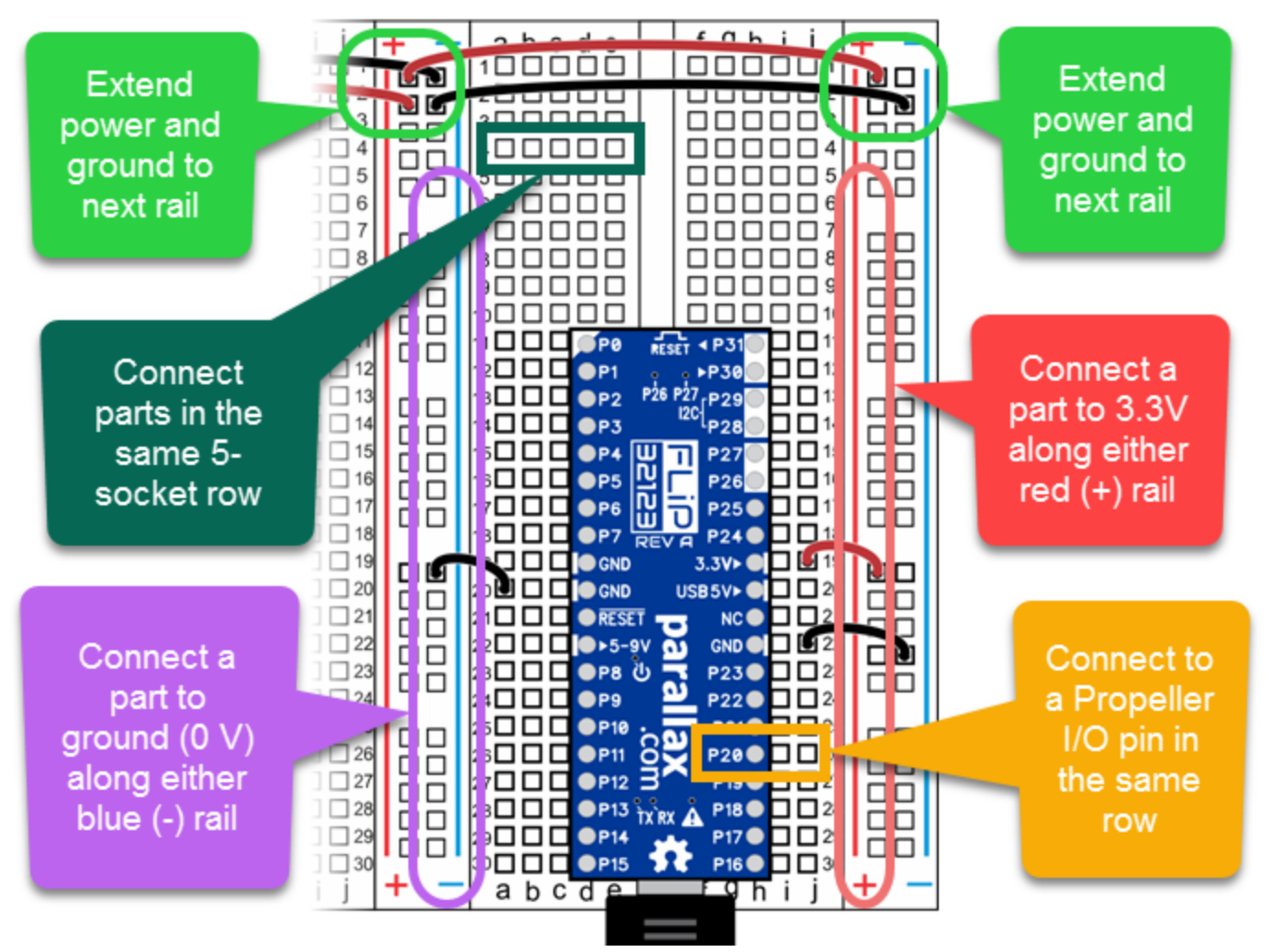
Example Circuit
We can see the + and - of the batter is flowing vertically and the components are connected horizontally.
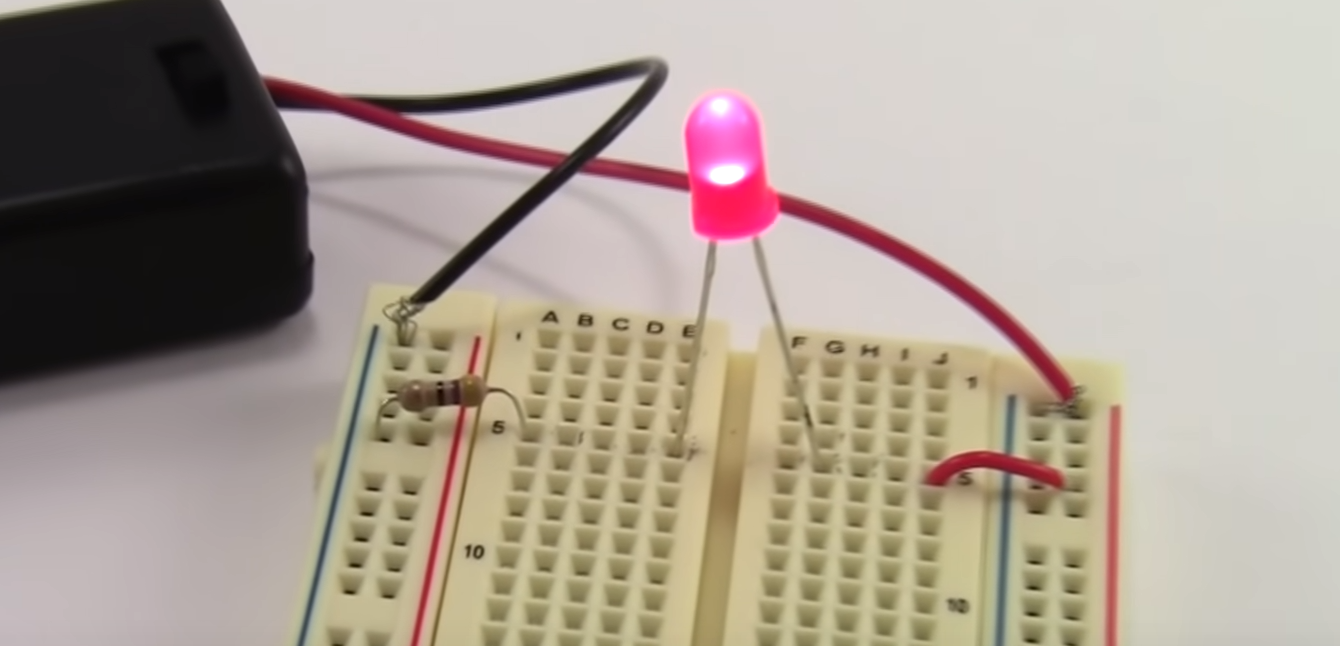
Capacitors
Purpose
The capacitor store current which can be released when the circuit is under load and the current drops.
Types
There are different types of capacitor. Electrolytic capacitors and Ceramic capacitors are two common types. The Electrolytic capacitors have a positive and negative (or polarized) and will explode when failing this is because the component contains a liquid inside which can boil.
Resisters
Purpose
A resistor is a passive two-terminal electrical component that implements electrical resistance as a circuit element. In electronic circuits, resistors are used to reduce current flow, adjust signal levels, to divide voltages, bias active elements, and terminate transmission lines, among other uses.
Reading Resisters
Here is a chart for reading resisters.
